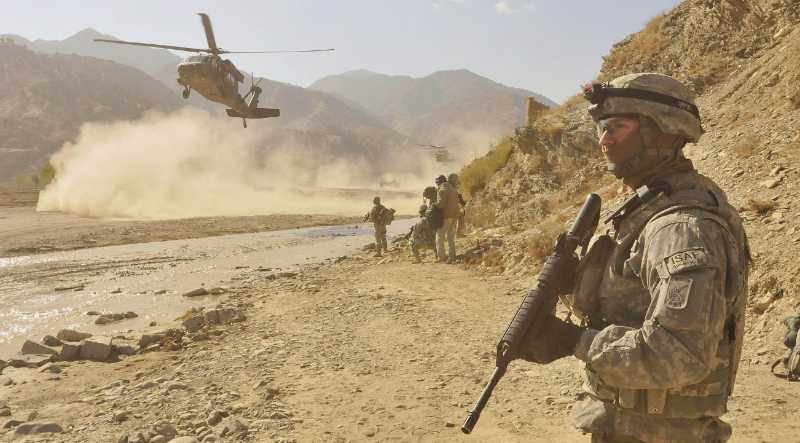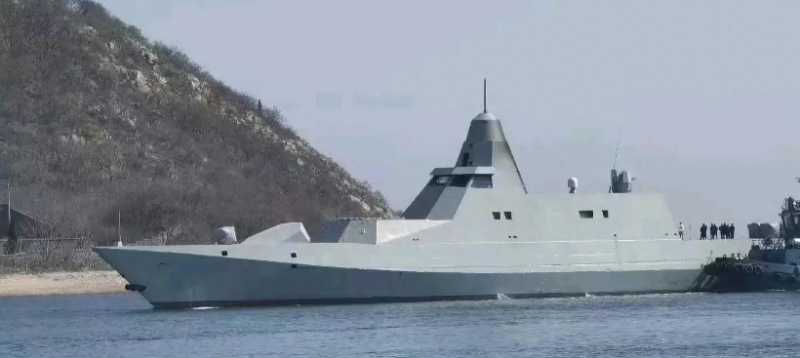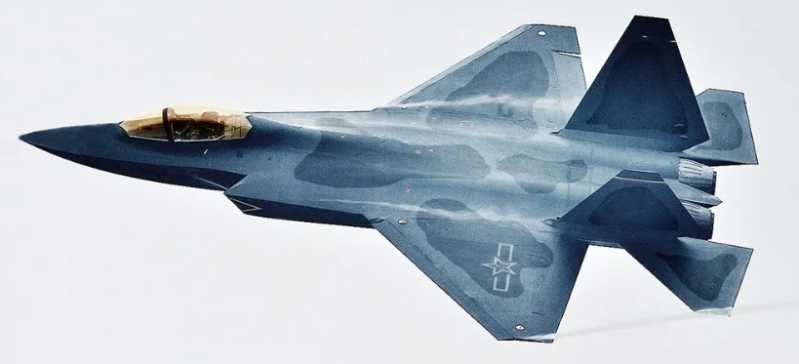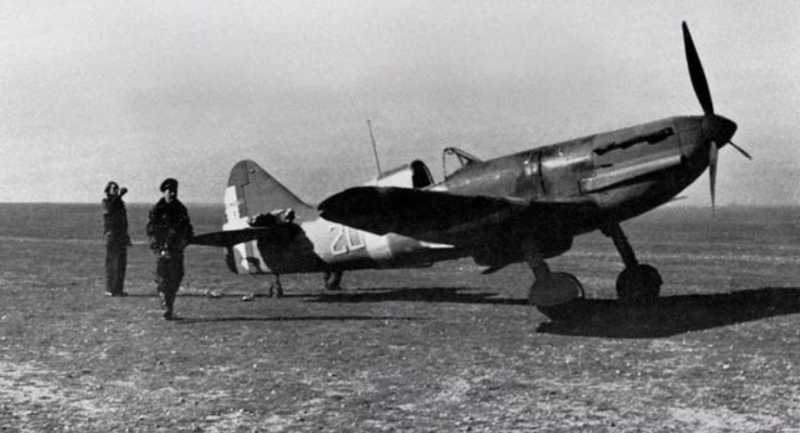In Afghanistan, an ancient and complex land, the United States once entered with the ambition to reshape the regional order and fight terrorism, but ultimately failed to escape the fate of many great powers in the long river of history. This article aims to deeply explore the root causes of the United States’ failure in the Afghan war. It is not only a review of a long and costly conflict, but also a profound analysis of international politics, military strategy, cultural conflicts and the limits of national will. We will shuttle through the fog of strategic decision-making and examine those seemingly reasonable but gradually pushed the United States into the abyss. At the same time, we will also touch the deep texture of Afghan society and understand why the intervention of external forces is difficult to take root in this land.
The deviation of the United States’ goals and actions in Afghanistan
Afghanistan is one of the main targets of the United States’ "global war on terror". At the beginning of the war, the United States’ goal was to overthrow the Taliban regime that supported al-Qaeda and establish a democratic and free modern capitalist system in Afghanistan. In the military operation launched in 2001, the United States, relying on its powerful military force, defeated the Taliban regime in a very short period of time without any suspense, and established the current Afghan government in the form of Western liberalism. Based on the situation 20 years after the war, the current Afghan government is a secular Islamic regime, which has shown its openness and integration with the world on the world stage. However, this cannot end the turmoil and war in Afghanistan. The Taliban forces defeated by the US military did not dissipate, but moved to the vast rural and mountainous areas of Afghanistan, and continued to firmly confront the powerful US military, making the situation in Afghanistan always show that the Taliban is suppressed militarily, but the Taliban has a broader mass base in Afghan society politically. This is the contrast between the US goals and actions in Afghanistan, and it is also an important reason for the US to withdraw from Afghanistan and make strategic adjustments 20 years later.
The failure of the United States in Afghanistan
The key stage of the Afghan war was the period when Presidents Bush and Obama took office. During this period, the US policy on Afghanistan included two aspects, namely military operations against the Taliban and al-Qaeda and Afghan national construction. Since the success of the Marshall Plan to support the reconstruction of Europe after World War II, the most important part of the United States’ foreign wars has been to implement reconstruction in countries where it has intervened militarily, including national construction in both the political and economic aspects of defeated countries. In the decades since the war, this kind of military intervention and national reconstruction by the United States has been an important strategic component of establishing the United States’ global hegemony. There is no doubt that the US military’s military operations against the Taliban and al-Qaeda have always been absolutely dominant and effective. However, the "national construction" carried out in Afghanistan lacks feasible goals and coherent and clear strategies. Many policies are contradictory, resource investment is seriously insufficient, and there are many problems in policy implementation and institutional coordination. This is the biggest failure of the United States in Afghanistan and the fundamental reason for the United States’ eventual withdrawal from Afghanistan.
The root cause of the United States’ emphasis on military operations and neglect of construction in Afghanistan is the security anxiety left by the "9.11" attacks on American society. This has prompted the United States’ security reconstruction in Afghanistan to be dominated by "anti-terrorism" and "anti-insurgency" military operations, while ignoring the formulation and implementation of policies for Afghanistan’s national construction. The consequence of long-term combat operations is that the sense of security of Afghan society and ordinary people has been weakened. The "militarization" of reconstruction aid to Afghanistan has made national construction revolve around military operations and cannot bring economic revitalization to Afghan society. At the same time, in terms of political reconstruction, the United States has implemented a presidential system in Afghanistan despite the opposition of the Northern Alliance and some countries. This choice is incompatible with Afghanistan’s political traditions and culture. The United States’s assistance bypassing the Afghan central government has led to the emergence of a "parallel government" and undermined the authority of the central government. In terms of economic reconstruction, a "double parasitic system" has emerged, and support for the development of agriculture and rural areas is seriously insufficient, making it difficult to effectively deal with the drug economy. The "New Silk Road" plan proposed by the United States overestimates the unity of Central Asian countries and Afghanistan, and lacks resource investment to promote regional economic development. Fundamentally speaking, the United States’ "national construction" in Afghanistan lacks a moral basis and is difficult to gain the support of the Afghan people. There are many conflicts with the reconciliation process advocated by the Afghan government that is "owned and led by Afghans". This is a manifestation of the arrogance of American power and its chronic disease of "liberal hegemony" strategy.
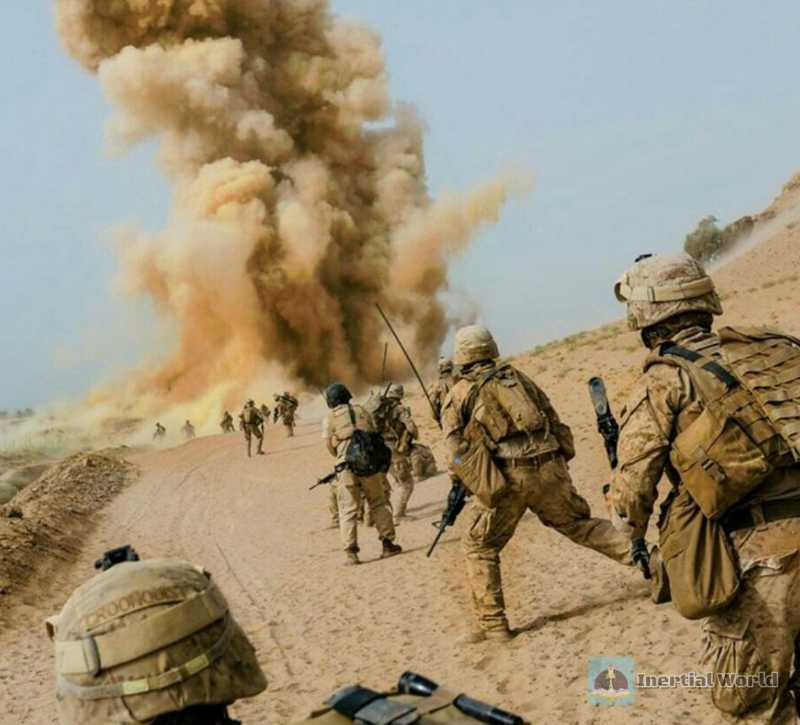
Chaotic reconstruction policy in Afghanistan
Since the Trump administration came to power, it has significantly adjusted the "liberal hegemony" strategy adopted by the United States after the Cold War, adhered to the "America First" policy, emphasized that foreign policy should pursue "principled realism", explicitly rejected "globalism", and tried to reduce the United States’ "providing global security and other global public goods". This policy shift was first reflected in the US policy in Afghanistan. The Trump administration further reduced the size of US troops in Afghanistan and negotiated with the Taliban on a peace agreement to create conditions for the complete withdrawal of US troops from Afghanistan. Although then-US President Barack Obama officially announced the end of the Afghan war on December 28, 2014, the armed conflict between the United States and the Taliban and other forces in Afghanistan has continued to this day. Since the Bush administration launched the Afghanistan war in October 2001, this war has surpassed the Vietnam War to become the "longest war" in US history, with related expenditures exceeding US$2 trillion, which is only the investment in military operations. While carrying out military operations, the United States is also carrying out "nation-building" in Afghanistan, investing a lot of money and other resources.
In December 2014, John Sopko, the US Special Inspector General for Afghanistan Reconstruction, said that after deducting inflation, the US cost of Afghanistan reconstruction was as high as more than US$100 billion, exceeding the "Marshall Plan" for rebuilding Western Europe after World War II. When describing the huge extent of US spending, Sopko said, "When my auditors reported the spending to me, I said, ’You must be making it up. This is like Alice in Wonderland.’" According to the definition of James Dobbins and others, "state building" refers to promoting political and economic changes in a country’s society after a conflict through various efforts, including the use of force, so that peace can be achieved within the country and between the country and its neighbors. Of course, the so-called change is to achieve democratization as the ultimate goal. In short, "state building" is "the use of force to promote the transformation of relevant countries to a democratic system after a crisis occurs."

After the end of the Cold War, the United States led other countries to implement military intervention and "state building" in so-called "failed states" or "failing states" such as Haiti. Afghanistan and Iraq are the main targets of the United States’ "state building" in the 21st century. In American policy and research discourse, "state building" is often mixed with concepts such as "reconstruction" and "regime building". Although "state building" is a relatively broad policy concept, it has become an important part of the United States’ national security and diplomatic affairs after the Cold War. According to the report "National Security Strategy of the United States" released by the Bush administration in March 2006, reconstruction and stabilization operations are crucial to "changing the US national security system to meet the challenges and opportunities of the 21st century", and the United States should enhance its ability to plan and respond to post-conflict countries and "failed states".
The Bush administration proposed to build Afghanistan into a "free and democratic" country after overthrowing the Taliban regime. However, the fact is that after the Bush and Obama administrations, Afghanistan’s political system and domestic stability are still fragile, and achieving long-term peace still faces huge challenges. Obviously, the "nation-building" carried out by the United States in Afghanistan has failed to achieve the expected goals. Doug Bento and other American strategic circles have bluntly stated that the "nation-building" of the United States in Afghanistan has failed.
The Trump administration is particularly disdainful of the "nation-building" carried out in Afghanistan and other places. In August 2017, when announcing the new Afghanistan strategy, Trump said that he, like the American people, was deeply frustrated by the result of spending a lot of time, energy, money and American lives to "rebuild other countries" in the image of the United States. Trump made it clear that Afghans should take control of their future, govern their society, and create lasting peace, and that "we will not engage in ’nation building’ again." In fact, the United States’ experience in "nation building" in Afghanistan and other places has profoundly influenced the direction of the US national security strategy over the past decade, including the formation of the "America First" concept and the rise of the "non-liberal hegemony" strategy during the Trump era. Adam Roberts believes that the unsuccessful experience in Afghanistan "has called into question the idea that the United States can confidently use force to change the most difficult and divided societies in its envisioned ’unipolar moment’." The experience in Afghanistan has made the United States more cautious in foreign intervention.
"Nation building" is an important part of the "liberal hegemony" strategy adopted by the United States after the Cold War. The United States’ "nation building" in Afghanistan was once a key link in the Bush administration’s democratic transformation of the Greater Middle East.
The Bush and Obama administrations’ policies in Afghanistan
The “nation-building” that the United States exports while conducting foreign military intervention has three main characteristics, namely, “the goal of intervention is to achieve regime change or maintain regime in a specific country”, “the long-term deployment of US ground forces in these countries to undertake combat missions and basic administrative management”, and “the deep involvement of military and civilian personnel in the political process of these countries, including the reconstruction of their political systems”. Although the concept of “nation-building” appeared relatively late in the US strategy, this task is not new to the United States. Since the end of World War II, the United States has carried out “nation-building” in Federal Germany, Japan, South Korea, and southern Vietnam. In the 1990s, the Clinton administration carried out “nation-building” overseas many times, including Somalia and Haiti. These actions were costly but had limited results.
During the 2000 US presidential campaign, Bush said, “I don’t think our troops should be used for ‘nation-building’. I think our troops should be used to fight and win wars”. This shows that there were differences in the United States about this concept at first. After the September 11th incident in 2001, the Bush administration decided to use military means to overthrow the Afghan Taliban regime that sheltered the al-Qaeda organization. In October of the same year, the Afghan war codenamed "Operation Enduring Freedom" began, and the Taliban regime was overthrown in December. In May 2003, then US Secretary of Defense Donald Rumsfeld announced the end of the "main battle" of the Afghan war. The Bush administration realized that it needed to learn the lesson of the United States’ complete abandonment of Afghanistan after the Soviet army withdrew from Afghanistan in 1989, and try its best to prevent Afghanistan from falling into chaos again, and prevent terrorist organizations from taking advantage of the chaos to hide here again and instigate more attacks on the United States. Therefore, under the special background of the "global war on terror", the United States launched a round of "nation-building" operations in Afghanistan.
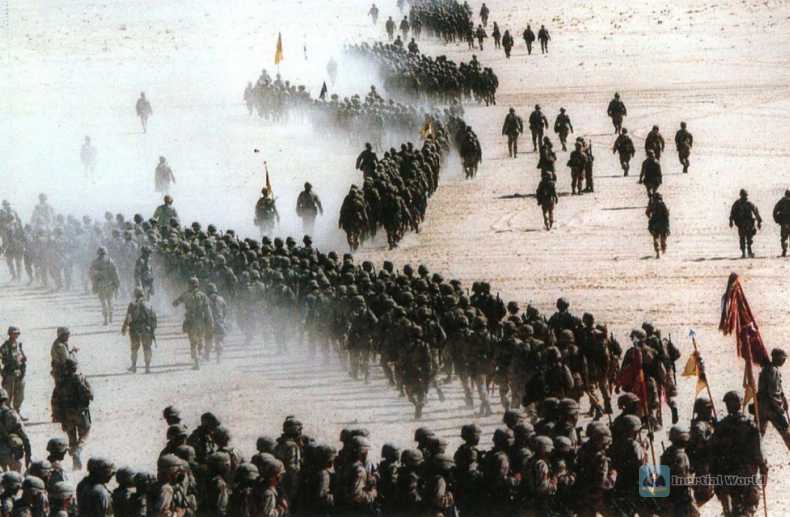
As the US strategic explanation states, regime change is one of the criteria for distinguishing general overseas military intervention from "nation-building". In the Bush administration’s conception of "Operation Enduring Freedom", restoring stability and establishing a free society in Afghanistan is an important goal. In September 2001, Bush Jr. ordered the formulation of "a plan to transform Afghanistan into a democratic country". He believed that the United States needed to undertake the "nation-building mission" and that it was the moral obligation of the United States to cultivate a better regime in Afghanistan. On April 17, 2002, Bush Jr. delivered a speech at the Virginia Military Institute. When explaining the US policy in Afghanistan, he mentioned the "Marshall Plan" and said, "We realize that true peace can only be achieved when we give the Afghan people the means to realize their expectations." However, Bush Jr.’s statement failed to translate into action to build an "Afghan version of the Marshall Plan." From 2002 to 2003, there was no large-scale insurgency in Afghanistan, which should have been a good opportunity to accelerate Afghanistan’s reconstruction, but the Bush administration failed to give Afghanistan’s reconstruction the attention and investment it deserved.
Although the United States proposed to transform Afghanistan into a democratic country, then Vice President Richard Cheney and other members of the White House decision-making level did not agree to send a large number of US troops to Afghanistan for peacekeeping missions and to stay there for a long time, which was called the "light footprint" policy. To a large extent, the "light footprint" policy was adopted because the Bush administration began planning to launch the Iraq War to overthrow the Saddam regime shortly after the "9.11" incident. Iraq was regarded as the decisive battlefield of the "global war on terror". The Iraq War launched in March 2003 squeezed out the resources that could have been used for Afghanistan, so the Bush administration’s investment in Afghanistan’s reconstruction was very limited. In 2002, the US Congress passed the Afghanistan Freedom Support Act, deciding to allocate US$425 million annually from 2003 to 2006 to support Afghanistan’s development, including providing humanitarian assistance to refugees and supporting anti-drug operations. However, according to the statement of then UN Secretary-General Kofi Annan in January 2002, Afghanistan needed about US$10 billion in reconstruction aid in the next five years, and at least US$1.3 billion in 2002 alone. Gary Schroen, an official in charge of Afghanistan affairs at the CIA, believes that Afghanistan needs $3 billion to $4 billion in aid each year, based on an annual per capita income of $100. Obviously, there is a huge funding gap for Afghanistan’s reconstruction. Around 2004, in order to make Afghanistan’s reconstruction an achievement of the Bush administration and win public support for its re-election campaign, the US government increased its investment in Afghanistan’s reconstruction. However, until June 2004, when then-Afghan President Hamid Karzai visited the United States, the United States only promised to provide $2.2 billion in aid to Afghanistan, while the funds used for Iraq’s reconstruction at the time were as high as $18.6 billion.
During the second term of the Bush administration, criticism of its Afghanistan policy increased, and many people worried that the US "nation-building" in Afghanistan was facing a collapse. In September 2006, then Democratic Senator Joseph Biden said that Afghanistan was sliding into a full-scale drug economy and that the Taliban was stronger than at any time since they were overthrown. "The Bush administration’s failure to make any progress on reconstruction since 2001 has created strong resentment, which will put all our achievements in jeopardy."

In November 2007, at a meeting of the White House National Security Council chaired by Bush, senior officials attending the meeting admitted that although the United States had won combat operations in Afghanistan, it had failed to achieve reconstruction goals in the fields of governance, economy and security. At that time, an internal assessment of the US intelligence department disclosed by the Washington Post pointed out that the Taliban had expanded to new areas, the amount of poppy cultivation in Afghanistan had increased, the Karzai government was weak, and Afghanistan was facing the risk of strategic failure. Against this backdrop, the Bush administration tried to increase investment in Afghanistan’s reconstruction. In September 2008, Bush gave a speech at the National Defense University of the United States, announcing the deployment of additional troops to Afghanistan to "provide security for the Afghan people, protect Afghanistan’s infrastructure and democratic system, and help ensure that the people have access to education, health care and other services." Bush also said that the United States would promote the political participation of Afghan tribal forces and send more American experts to help Afghanistan improve its governance and economic development. However, as the Bush administration was about to expire, it failed to take substantive measures to implement the above ideas.
In 2008, Democrat Obama won the US presidential election. During his tenure as a senator, he repeatedly criticized the Bush administration’s Afghanistan policy. Compared with his firm opposition to the Iraq War, Obama called the Afghanistan War a "necessary war" and a "good war", a "war we must win." In response to the Bush administration’s neglect of Afghanistan’s reconstruction, Obama criticized that "the amount of money the United States has spent on Afghanistan’s reconstruction since 2001 is equivalent to the amount of three weeks of military operations in Iraq." This shows that Obama advocates increasing investment in Afghanistan. However, the Obama administration has made ending the Afghan war an important policy goal. This investment is not mainly for "nation building". The main purpose of its Afghanistan policy is to promote the "Afghanization" of fighting and reconstruction in Afghanistan to transfer security responsibilities to Afghanistan, so that the United States can end the war as soon as possible. Although the Obama administration has significantly increased its investment in Afghanistan in both military and civilian aspects, its core concern about the Afghan issue is how the United States can "withdraw" from Afghanistan. In this process, in order to avoid being attacked by the Republican Party and other forces, Obama has always emphasized that the United States is not "nation building" in Afghanistan, but "regime building". Although Obama attaches more importance to the reconstruction of Afghanistan than Bush Jr., he also does not want the United States to take too much responsibility.
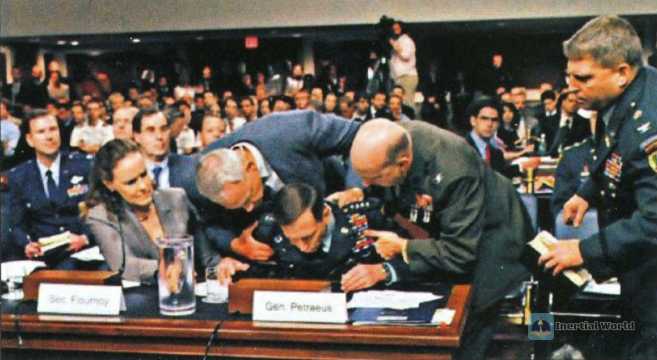
In order to better handle issues such as Afghanistan’s reconstruction, the Obama administration established the post of special envoy for Afghanistan and Pakistan in February 2009, and Richard Holbrooke, a senior figure in the diplomatic community, was appointed as the special envoy. On March 27, 2009, Obama officially announced the "comprehensive new strategy for Afghanistan and Pakistan". He defined the core goal of the United States as "disintegrating, eradicating and defeating the al-Qaeda organization entrenched in Afghanistan and Pakistan, and preventing them from returning to Afghanistan and Pakistan in the future", and emphasized that "as president, my greatest responsibility is to protect the American people. We are not in Afghanistan to control the country or to dominate its future." In this new strategy, Obama proposed "civilian surge", that is, to increase the number of military personnel while sending a large number of agricultural experts, engineers and other civilian aid forces to promote agricultural alternative planting, eradicate the drug economy and accelerate the economic and social reconstruction of Afghanistan. In terms of politics, Obama said that the United States will increase its attention and support for local governance, differentiate between the Taliban diehards and ordinary people who have been oppressed and induced to join the insurgent organization, and increase contacts with influential local tribal leaders and local armed forces. In addition, the Obama administration attaches more importance to Pakistan’s influence on Afghanistan’s reconstruction and decides to provide $1.5 billion in aid each year for five years, specifically for promoting economic and social development in the border areas between Pakistan and Afghanistan. .
The Obama administration adopted a strategy of "advance to retreat", trying to create conditions for ending the Afghan war as soon as possible by increasing military and civilian investment. However, the White House and the US military, especially the commander of the US military stationed in Afghanistan, had a dispute over the dominance of Afghanistan policy, which made it difficult for the Obama administration to implement policy adjustments on the reconstruction of Afghanistan.
In December 2009, Obama delivered a speech at the West Point Military Academy, announcing further increases in troops in Afghanistan and increased investment in reconstruction. He also announced a timetable for the US to "withdraw" from Afghanistan, starting in July 2011. Obama said, "Afghans will bear the responsibility for their own security, and the United States has no interest in fighting an endless war in Afghanistan. As president, I refuse to set goals that are beyond our responsibilities, our means, or our interests," "because what I care most about is nation-building in our own country." He emphasized that the reason for announcing the withdrawal time while increasing troops was to give Afghans some "sense of urgency"
In January 2010, then Secretary of State Hillary Clinton issued the "Afghanistan and Pakistan Regional Stabilization Strategy", planning to increase civilian assistance in Afghanistan. Due to Hillary’s personal preferences and considerations of gaining domestic political support in the United States, this strategy highlights the importance of issues such as women’s rights in Afghanistan. The "U.S. Economic Strategy for Afghanistan" released in December 2011 focused on creating jobs, providing basic public services, and basic During this period, the Obama administration increased the number of civilian personnel to guide Afghanistan’s reconstruction, especially local reconstruction, from about 400 at the beginning of 2009 to more than 1,300 in 2012. At least 400 of them worked in provinces and regions outside Kabul, compared with only 67 in 2009. After 2009, the United States provided about $2 billion in aid to Afghanistan for economic development each year. After 2011, the United States’ policy toward Afghanistan was centered on "transition," with the main task being to negotiate with the Afghan government on the "Strategic Partnership Agreement" and the "Bilateral Security Agreement." In May 2012, the United States and Afghanistan signed the The United States signed a "Strategic Partnership Agreement" involving "nation-building", which includes the United States’ support for consolidating Afghanistan’s democratic system, protecting and promoting democratic values, supporting Afghanistan’s long-term economic and social development, and encouraging regional cooperation. In December 2014, the Obama administration announced that the war in Afghanistan had been "responsibly ended". Of course, this is just the standard rhetoric of a typical politician’s "victorious transition". The Obama administration’s "expanded investment" still "has not paid off"
During this period, the Obama administration increased the number of civilian personnel to guide Afghanistan’s reconstruction, especially local reconstruction, from about 400 at the beginning of 2009 to more than 1,300 in 2012. At least 400 of them worked in provinces and regions outside Kabul, compared with only 67 in 2009. After 2009, the United States provided Afghanistan with about $2 billion in economic development aid each year. After 2011, the United States’ policy toward Afghanistan was centered on "transition", and its main task was to negotiate with the Afghan government on the "Strategic Partnership Agreement" and the "Bilateral Security Agreement". In May 2012, the United States and Afghanistan signed the "Strategic Partnership Agreement", which involved "nation-building" content, including the United States’ support for consolidating Afghanistan’s democratic system, protecting and promoting democratic values, supporting Afghanistan’s long-term economic and social development, and encouraging regional cooperation. In December 2014, the Obama administration announced that the war in Afghanistan had been "responsibly ended". Of course, this is just a typical politician’s standard rhetoric of "victorious transition". The Obama administration’s "expanded investment" still "has not paid off".
The chaos of the United States’ "nation-building" in Afghanistan
With the launch of the wars in Afghanistan and Iraq, the United States has launched the largest "nation-building" overseas since the "Marshall Plan". "Nation-building" involves political-military relations, foreign aid capabilities, etc. factors. However, the corresponding mechanism arrangement and capacity building of the United States are obviously insufficient, especially "the civil means in the United States’ national capacity have shrunk in the post-Cold War period. Due to the lack of sufficient civil work capacity, the conflict situation in Afghanistan and Iraq has become more severe and challenging."
Whether in Washington or in Afghanistan, the relevant agencies responsible for "nation-building" in the United States have many contradictions on many issues, including the competition among departments for the leading power of reconstruction, the right to use financial funds and the right to deploy personnel, and the different working cultures among agencies. Max Boot, a senior fellow at the Council on Foreign Relations, believes: "The crux of the problem is that no department in the US government believes that "nation-building" is under its jurisdiction. The United States Agency for International Development is the one that has the closest function of "nation-building" in overseas countries and regions, but its responsibilities are unclear and its own resources are also stretched.
In order to promote the reconstruction of Afghanistan and Iraq, the Bush administration decided to establish the Office of Reconstruction and Stabilization Coordinator in the State Department in July 2004. In 2005, Bush issued National Security Presidential Directive No. 44, formally establishing the agency, which is directly responsible to the Secretary of State and closely coordinates with agencies and personnel of ministries such as the Department of Defense, the Department of Commerce, the Department of Justice, and the Department of Homeland Security to unify the planning of humanitarian assistance, stabilization and reconstruction operations in a certain region and country. The office is also responsible for building a team of civilian experts and reserving necessary human resources for civilian assistance.
In 2011, the Obama administration upgraded the office to the Bureau of Conflict and Stabilization Operations. In addition, in order to coordinate overseas reconstruction and stabilization operations at a higher level, the Bush administration established the Interdepartmental Management Mechanism for Reconstruction and Stabilization Operations in 2007. This mechanism is very special and is "activated" from time to time as needed. It aims to promote communication between Washington policymakers, ambassadors and military commanders abroad, and integrate government resources from all aspects. The mechanism includes a three-level structure: the top-level country reconstruction and stabilization action group, which is co-chaired by the assistant secretary of state in charge of a certain region and senior officials of the National Security Council, the middle-level integrated planning team, the front-end civil group and the front-end civil group on the scene.

The funding sources for "nation-building" include both budget funds obtained by each department separately and some comprehensive budget funds that can be used by multiple departments. Later, a stabilization and reconstruction fund was specially established under the management of the State Department to give civilian agencies more resources and greater flexibility to engage in "nation-building" work. In addition, the International Development Agency established a complex crisis fund regularly funded by Congress in 2009, and also established the Civil Response Office in the same year to be responsible for the training and deployment of civilian rapid response teams.
The United States has a wide range of institutions involved in promoting "nation-building" overseas, and coordination between the military and the government and within civilian institutions is very difficult. There are many conflicts between the U.S. Department of Defense and the State Department, the International Development Agency and other institutions. The first is the issue of resource allocation. Statistics from the U.S. Congressional Research Service on the expenditure of the wars in Afghanistan and Iraq show that from 2001 to 2014, the total expenditure of the United States reached 1.6 The US military has also set up internal agencies to carry out stabilization and reconstruction tasks, such as the Central Command’s Afghanistan Future Task Force and the Army’s Army Civil Affairs and Civil Response Force. These agencies are far superior to civilian agencies such as the State Department in terms of funding. Secondly, the State Department and the Department of Defense do not coordinate daily affairs smoothly. In 2002, then-US Secretary of Defense Donald Rumsfeld appointed Dav Zacksim as the Chief Coordinator for Afghanistan Affairs, but Zacksim did not know for a long time that in addition to the Afghanistan Reconstruction Coordinator, there was also a position of Coordinator for the Future of Afghanistan in the State Department. This reflects The gap between the State Department and the Department of Defense was created.
As civilian departments, there is also a problem of "power struggle" between the U.S. State Department and the Agency for International Development. The Agency for International Development regards the establishment of the Office of Reconstruction and Stabilization Coordinator as a move by the State Department to seize resources and power from itself. In 2006, the Agency for International Development was merged into the State Department, and the then-AID Administrator Randall Tobis was appointed as the Under Secretary of State for Foreign Aid. He rejected the budget request of the Office of Reconstruction and Stabilization Coordinator. In the end, the system of "double reporting" from the Office of Reconstruction and Stabilization Coordinator to the Secretary of State and the Deputy Secretary of State in charge had to be adopted to ease the tension to a certain extent. In 2008, three former AID administrators jointly wrote in Foreign Affairs magazine that the merger of the Agency for International Development would The decision to enter the State Department was wrong. The two sides have irreconcilable differences in organizational culture, action preferences, and management systems.
There are also conflicts between the US Congress and the executive branch over the reconstruction of Afghanistan. In order to ensure its own policy influence, Congress established the Special Inspector General for Afghanistan Reconstruction and its office (SIGAR) through the National Defense Authorization Act for Fiscal Year 2008. The agency regularly publishes reports to evaluate the progress of Afghanistan’s reconstruction in the fields of governance, security, and economic development, with particular attention to the use and effectiveness of US funds. The agency has repeatedly publicly criticized the State Department and the International Development Agency for concealing or concealing the true situation of Afghanistan’s reconstruction, which in turn led the latter to accuse SIGAR of inaccurate or exaggerated audit and evaluation results. In December 2013, the Department of Defense publicly expressed dissatisfaction with SIGAR’s claim that the US military’s $3 billion in support of Afghanistan’s national security forces was at risk.
Whether the US "nation-building" in Afghanistan can be carried out smoothly depends not only on the relationship between relevant agencies in Washington, but also on the coordination of US military and political forces in Afghanistan. During the Bush administration, U.S. Ambassador to Afghanistan Zalmay Khalilzad and U.S. Commander in Chief David Barno established a good cooperative relationship. The U.S. Embassy in Afghanistan led the establishment of an interdepartmental planning team in the region, which was responsible for collecting, organizing and analyzing various aspects of "nation-building" information and providing it to U.S. officials in Afghanistan and senior Afghan government officials. In addition, there are some coordination mechanisms such as the Civil-Military Joint Action Team and the Interdepartmental Office of Provincial Affairs. There are also problems with the coordination of U.S. agencies in Afghanistan.
The complex relationship between these departments and the blurred functional boundaries make the phenomenon of "multiple government departments" in the United States more prominent. From 2009 to 2011, more than 1,100 civilian experts from nine federal government departments worked in Afghanistan. They came from the Ministry of Agriculture, the Ministry of Justice, the Ministry of the Treasury, and the Department of Homeland Security, and were scattered in provincial reconstruction teams and district support teams. These personnel mainly reported to the headquarters in Washington. The lack of understanding of Afghan affairs by U.S. civilian aid personnel resulted in their complete incompetence in actual work. Many of the main responsible persons only received about 30 days of training before taking up their posts. They are often transferred soon after becoming familiar with the local work, resulting in limited work results. In 2010, the U.S. State Department "admitted that Afghanistan and Iraq are not the best templates for civilian capabilities for crises and conflicts in the "Four-Year Assessment Report on Diplomacy and Development" that we should publish." There are differences between civilian institutions and the military. US military commanders believe that civilian officials "act too slowly", while the latter believe that the former are arbitrary. Research by the Center for Complex Operations at the National Defense University of the United States pointed out that the U.S. civil and military operations in Afghanistan have always been "two unrelated efforts based on uncoordinated mechanisms and organizational models."
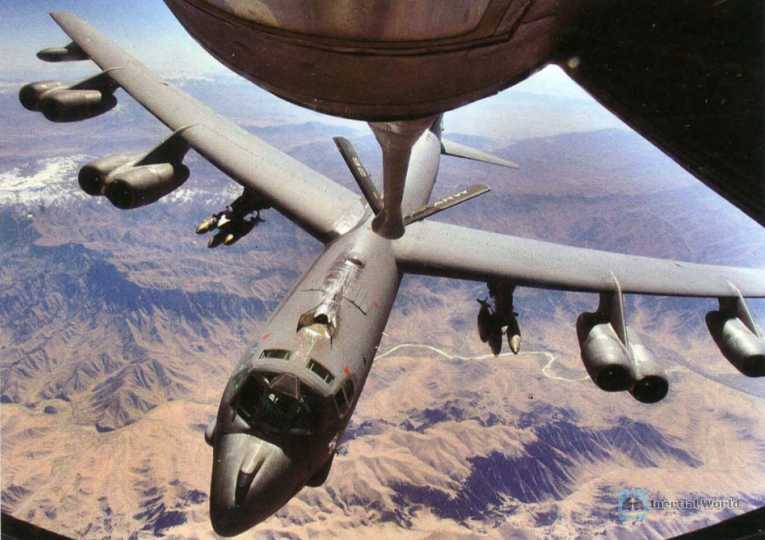
US security and reconstruction in Afghanistan
Security, governance, and economic development are the three pillars of the US "nation-building" in Afghanistan. Ensuring security, especially building Afghanistan’s national security forces and enhancing the sense of security of ordinary Afghans, are necessary conditions for progress in Afghanistan’s reconstruction. However, the United States is in a difficult situation in Afghanistan’s security reconstruction. On the one hand, the United States does not want to deploy too many military forces to avoid being regarded as a "foreign occupier" like the Soviet Union by the Afghans. On the other hand, due to the insufficient number of US troops stationed in Afghanistan, , violence and conflict are frequent in Afghanistan. The US "anti-terrorism" operations in Afghanistan have caused a large number of Afghan civilian casualties, exacerbating the anti-American sentiment of the local people, and many people have turned to support the Taliban and other forces. After leaving office, Bush Jr. admitted in his memoirs that "Looking back now, our swift victory brought an unreal sense of accomplishment, and the small amount of military coverage later was obviously not enough to meet our needs." Due to the inability to effectively improve the security situation in Afghanistan, it is difficult to make substantial progress in Afghanistan’s reconstruction.
In January 2002, the Tokyo Conference with the theme of promoting Afghanistan’s reconstruction proposed a model in which "leading countries" are responsible for the reconstruction of Afghanistan in various fields. Among them, the United States leads Afghanistan’s "security reform", and its main tasks include disbanding and integrating local armed forces, Training the Afghan National Army, etc. Later, the United States gradually took over the Afghan police training that should have been the responsibility of Germany. This highlights that the United States’ own security concerns are the fundamental factor in its military presence in Afghanistan. Afghanistan’s national security forces mainly include the Afghan National Army and the Afghan National Police. In addition, there are intelligence agencies such as the National Security Agency and the Afghan Local Police.
The United States is leading the construction of a national army led by the Afghan central government. The White House believes that this is crucial to ending the warlord separatism in Afghanistan and promoting the smooth progress of reconstruction. At the same time, it can also reduce the defense pressure on the United States. After defeating the Taliban regime, the United States immediately launched the training and construction of the Afghan National Army. The U.S. training of the Afghan National Army generally takes two forms, including "in-house training" and "training". "Training" means that Afghan soldiers receive short-term training in shooting, battalion tactics, and the use of heavy weapons at training bases in Kabul and other places and the War College, a senior military academy. Another form is "battlefield training", which mainly organizes the US military, Western countries’ troops and Afghan soldiers into embedded training groups and action guidance and liaison groups, and adopts the method of "fighting side by side" between the US military and Afghan troops. In addition, in order to promote coordination with the Afghan National Army, the US military has also established mechanisms such as the Security Force Assistance Group. The Afghan government has established action coordination centers in regions and provinces and sent representatives to the centers to enable the Afghan national security forces to participate more deeply in the US military planning and combat missions.

The 20-year practice shows that the US and Western values face a series of challenges in training and building the Afghan National Army. First, the Afghan soldiers have a weak sense of national identity and responsibility. Many of the Afghan soldiers who were recruited joined the army to make a living. They were unwilling to be sent to areas far away from their hometowns to perform tasks, and the desertion rate was quite high. Secondly, due to the large demand for soldiers, it was impossible to carefully select and identify them. The illiteracy rate of soldiers was high and their backgrounds were complicated. Many insurgents took the opportunity to infiltrate the Afghan National Army. The US military has tried many times to conduct background checks on soldiers in terms of terrorism, human rights, and drug trafficking, but it was difficult to implement. In addition, there are frequent "internal attacks" by the Afghan National Army attacking US and NATO coalition soldiers. Many of these attackers are members of insurgent organizations. The Taliban leaders regard this "internal attack" as the most effective strike strategy. Thirdly, the Afghan National Army has a large gap in weapons and equipment and logistical support. The United States is worried that weapons and equipment will eventually fall into the hands of insurgents or local warlords, so it is unwilling to give full support. This not only affects the combat effectiveness of the Afghan National Army, but also leads to widespread dissatisfaction with the United States among the Afghan government and military personnel. Finally, the performance of Afghan soldiers on the battlefield was very unstable, and the effectiveness of coordinated operations was poor. American officers complained that Afghan soldiers would still secretly take drugs before performing combat missions.
In addition to reorganizing the Afghan National Army, maintaining the basic security and social order of the Afghan people requires qualified police forces. The construction of the Afghan national police force is another important task of security reconstruction. This task was originally undertaken by Germany, but Germany’s investment was limited and the progress was slow, which made the United States dissatisfied. Since the second half of 2003, the United States has gradually replaced Germany to lead the Afghan police training. The U.S. State Department’s International Narcotics and Law Enforcement Bureau and other agencies specifically undertake this task. They outsource the training of Afghan police to private security contractors such as Deyang International, Military Career Resources and Blackwater. However, these companies not only lack experience in training foreign police in countries such as Afghanistan, but also due to language, social culture and religious customs, the instructors from the United States often behave improperly and conflicts with the Afghans.
These plans not only encountered a series of problems in Afghanistan, but also caused disputes between the US Department of Defense and the State Department over the training of the Afghan police. The Department of Defense repeatedly questioned whether the State Department was capable of doing this work, complained that the construction of the Afghan police force was lagging behind, and believed that this police force failed to play its due role in the military operations in Afghanistan. Since the spring of 2005, the US Department of Defense has replaced the State Department to lead the training of the Afghan police. Robert Charles, the Assistant Secretary of State in charge of the International Narcotics and Law Enforcement Bureau at the time, strongly opposed the transfer of responsibilities. Only after he left office was the Department of Defense able to lead the construction of the Afghan police.
The important goal of the United States in promoting the construction of the Afghan police is to strengthen the control of the Afghan central government over security affairs, weaken the influence of local strongmen, and more effectively cooperate with the US military, NATO and the Afghan National Army to carry out combat missions. But in reality, this goal is difficult to achieve. The main reasons include three aspects. First, the overall quality of the Afghan police force is not high. Many people come from warlords or other armed forces, and there is a lack of background checks when recruiting. In February 2006, the Afghan Ministry of Interior proposed to the United States to establish the "Afghan National Auxiliary Police" project, adding 200 to 400 police officers in each district, but officers of the US Integrated Security Transition Command complained that the project eventually attracted "a group of rogues." Secondly, in the eyes of the United States, the police in Afghanistan are increasingly becoming an industry and forming a corruption chain. If you want to join the police force, you need to bribe the local power holders. After becoming a policeman, these people will seek opportunities to ask for money and things from the people. How to "overcome the culture of corruption" has become the biggest challenge in the construction of the Afghan police. Finally, most of the leaders of the Afghan police force are former local strongmen. They are important objects of reliance for the United States to promote "anti-terrorism" and "anti-insurgency" operations, but many of them are engaged in illegal activities, causing dissatisfaction among the Afghan people. The United States originally hoped to meet the security needs of ordinary Afghan people through the Afghan police force, but the forces it relies on are precisely the source of instability and insecurity in Afghanistan.
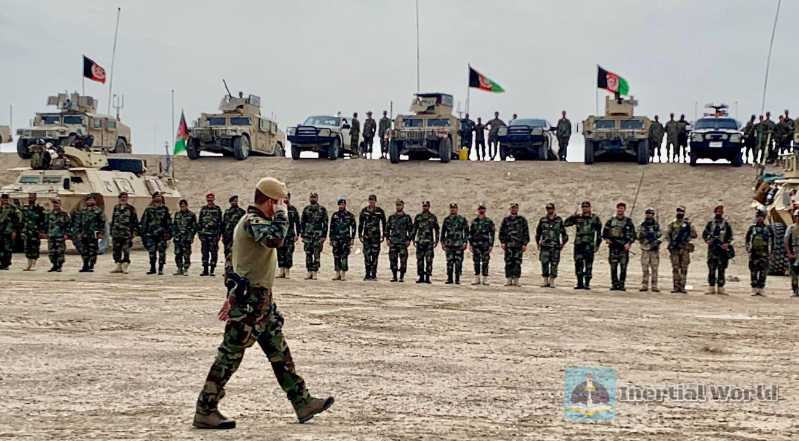
In order to promote the security reconstruction of Afghanistan, the United States established the Provincial Reconstruction Team in Afghanistan as a military-political cooperation mechanism, trying to closely combine security and development goals, military and civilian capabilities. In April 2003, Rumsfeld called the establishment of a provincial reconstruction team the "best way" to provide security in Afghanistan. Its predecessor can be traced back to the "Civil Action and Revolutionary Development Support" project promoted by the US military during the Vietnam War. After the end of the Cold War, the United States successively launched military intervention and reconstruction operations in Haiti and other countries, constantly exploring how to combine development aid with military activities. At the beginning of the Afghan war, the US military established a civil-military integrated action team as a temporary military-political coordination agency. The mechanism later evolved into a regional joint team, and local forces in Afghanistan were also included. Since 2002, the United States has gradually established provincial reconstruction teams in various provinces in Afghanistan, and issued the "Provincial Reconstruction Team Working Principles Manual" in February 2003.
The provincial reconstruction teams in each province are not exactly the same in terms of staffing, resource support and task priorities. Generally, each team has 80 to 120 personnel, with a ratio of civilian personnel to military personnel of about 3 to 5. Civilian personnel include political advisers, medical personnel, engineers, development project experts and translators, who come from the U.S. State Department, the Agency for International Development and the Ministry of Agriculture. Military personnel in the provincial reconstruction teams use funds from projects such as the U.S. Department of Defense’s "Overseas Humanitarian Disaster and Civil Assistance" to carry out aid activities, including building schools, digging wells, and renovating hospitals. The U.S. State Department established an economic support fund in 2004, which provided special funding for civilian personnel in provincial reconstruction teams.
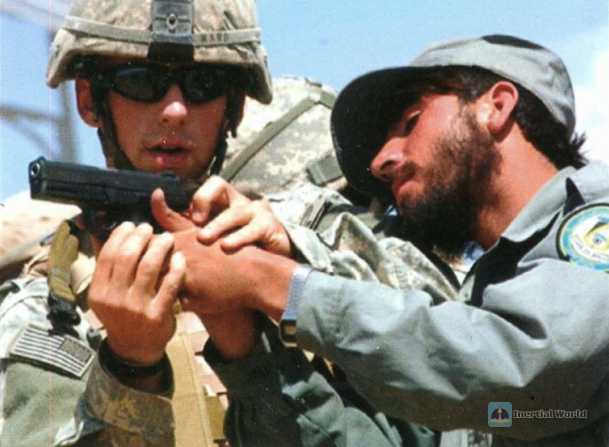
The main functions and tasks of the provincial reconstruction team include "coordinating the work of US government agencies in Afghanistan, improving the effectiveness of security and development assistance to Afghanistan, and providing a good environment for US military operations. The provincial reconstruction team can help US military commanders understand local conditions more timely and accurately, and the dispatched civilian officials focus on analyzing local political, social and economic development issues, including the relationship between different tribes and their attitudes towards insurgent organizations." "Help the Afghan central government enhance its authority, strengthen the central government’s legitimacy and governance capabilities, and provide the necessary conditions for the US military to implement "counter-insurgency" operations. The members of the provincial reconstruction team include representatives of the Afghan central government, mainly the Ministry of the Interior, and the US side through small The group provides a platform for the coordination of work among various Afghan government departments, and also ensures that the reconstruction projects implemented by the Afghan government will help safeguard U.S. interests. The provincial reconstruction team assists the Afghan government in implementing reforms in the fields of police and military at the local level, especially providing support for the local deployment of Afghan security forces that have completed training. In addition, the provincial reconstruction team will also provide security during important political events such as the presidential election and the National Assembly election. The team members will serve as "provincial reconstruction teams will assist in resolving local social conflicts in Afghanistan, serve as election observers", play the role of mediators between different tribes, support the work of local "Shuras", and maintain social stability.
The United States has tried to create a safe and stable environment in Afghanistan through provincial reconstruction teams. Although this mechanism has played a certain role, There are also many problems and limitations. The resources that the provincial reconstruction teams have are generally very limited, and their ability to provide civilian assistance is particularly lacking. The Pentagon pointed out that "the State Department and other government departments simply cannot send enough professionals in areas such as administrative management and economic development to assist the military, and many tasks are ultimately undertaken by the military." On the other hand, it is more difficult to coordinate the military-civilian relationship in this mechanism. US military personnel believe that the work of the provincial reconstruction teams should focus on "protecting troops" and achieving military goals, while civilian officials are dissatisfied with the fact that the provincial reconstruction teams are dominated by the military. "Ambiguous tasks, vague roles, and insufficient resources have led to high tensions between the civilian and military within the provincial reconstruction teams, especially in determining the priorities of tasks." The provincial reconstruction teams are engaged in a mission to "win hearts and minds." The targeted aid operations are mainly aimed at promoting the "anti-terrorism" and "anti-insurgency" strategies, which brings up the problem of "militarization" of reconstruction aid. Local Afghans believe that "Afghans are suspicious of their military motives and will not be fooled by material benefits aimed at "winning people’s hearts and minds". The actions of the provincial reconstruction teams often confuse ordinary Afghans and make them confused about the difference between the army and ordinary aid organizations.
International non-governmental organizations such as "Save the Children" and the American International Care Organization have also made sharp criticisms of the provincial reconstruction teams. They believe that the aid provided by the latter has caused the Afghan people to confuse humanitarian aid organizations with military organizations carrying out combat missions, thereby bringing difficulties and risks to the former’s aid activities and reducing the safety of general aid organizations in carrying out operations in Afghanistan.
(To be continued)


